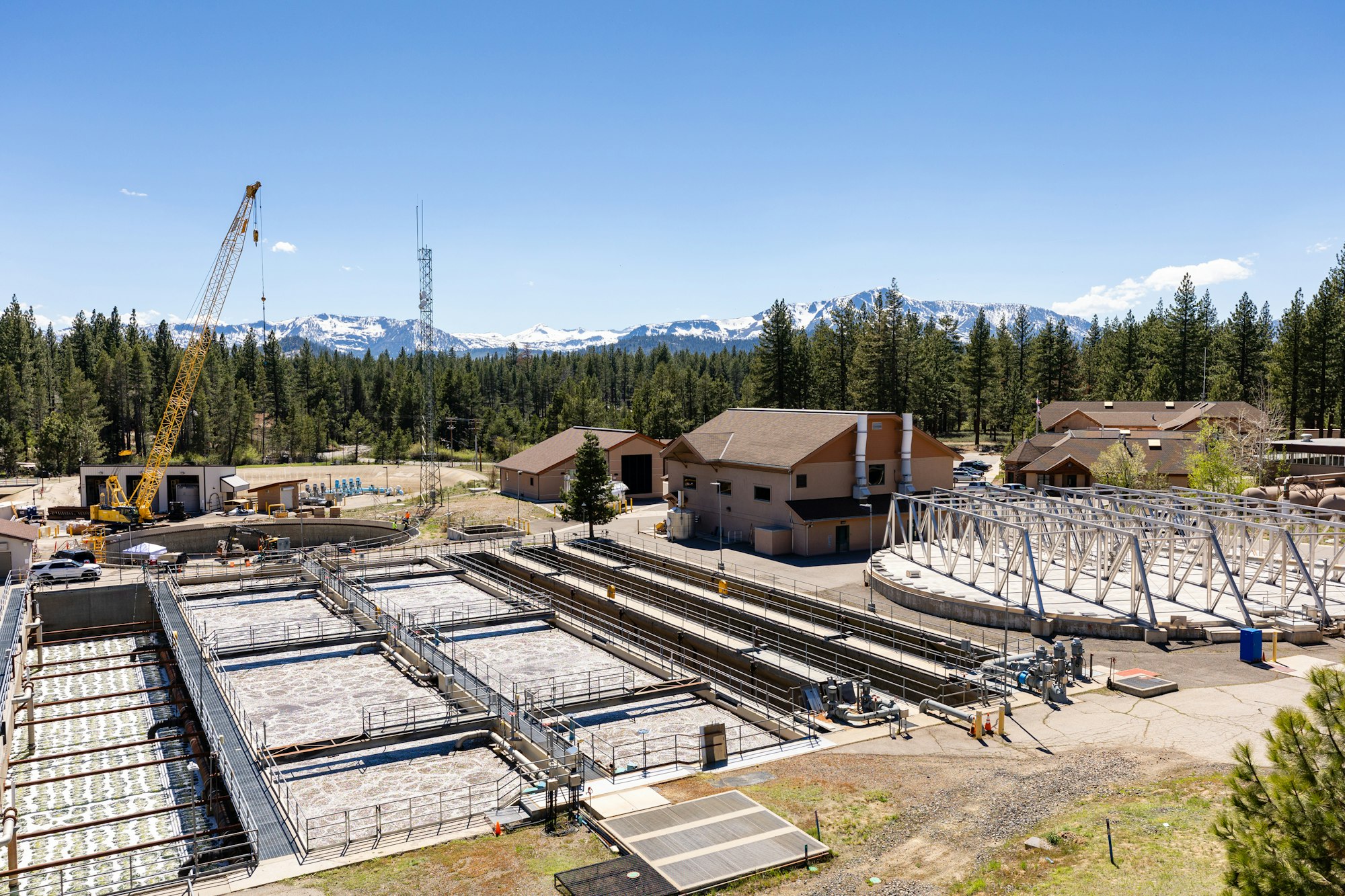Who We Are

The South Tahoe Public Utility District, a public agency established on September 28, 1950, (pursuant to Section 9 of "The Public Utility District Act") supplies drinking water and provides sewage collection, treatment, and export to protect Tahoe's delicate ecosystem. Managing this complex operation requires an uncommon environmental sensitivity.
Our Vision
Maintain a dynamic organization that can quickly and proactively meet an ever-increasing environment of regulations and scarce resources.
Our Mission
Furnish our customers with reliable water and wastewater services, and provide those services safely, efficiently, and cost-effectively.
Strategic Goals
- Provide exemplary customer service.
- Provide reliable and safe water distribution, wastewater collection and treatment, and recycled water land application systems.
- Foster a culture of efficient water use in our community, and promote public awareness of all District activities and the value of District services.
- Develop staff to ensure professionalism and continuity of organizational knowledge.
- Continue to be outstanding financial stewards.
- Provide a safe and harmonious work environment for our employees.
- Maximize appropriate use of technology to improve operational efficiency and prioritize asset replacement.
1950 - The District is formed.
1956 – Plant construction is completed.
1967 – Recycled water export pipeline up and over Luther Pass to Alpine County completed.
1969 – Porter-Cologne Act of 1969, mandate export of wastewater in the Tahoe Basin by 1972.
1972 – Federal Clean Water Act of 1972 and amendments to Porter-Cologne Act
1974 – Expand wastewater treatment plant to 7.5 MGD.
1974-87 –Supplying water to the community with the purchase and integration of four local water companies
1989 – Harvey Place Dam and Reservoir placed into service. Wastewater treatment plant capacity expanded to 7.7 MGD.
1997 – MTBE first discovered in District drinking water well
1997-98 – District shuts down multiples wells because of MTBE contamination (12 out of 34 wells). First Tahoe Summit with President Clinton in 1997, resulting in $10.6 million in grants funds appropriated for the District’s export line replacement project.
2004 - operations now 100% recycled with biosolids composted by Bently Agrodynamics. District adopts Water Conservation Program Ordinance with designated watering days.
2006- Move into new Customer Service Facility.
2007 – Angora Fire burned 242 homes in South Lake Tahoe, resulting in the formation of the Lake Tahoe Community Fire Prevention Partnership to bring grant funds into the basin for fire suppression.
2010 – District begins the first of eight projects to install 9,200 meters over the next 10 years at a cost of $24 million.
2012 – New Headworks building at wastewater treatment plant
2014 – Governor Brown Proclamation of a State Emergency called on all Californians to reduce their consumption by 20% due to severe drought. District activated Water Shortage Contingency Plan. Lukins Brothers Water Company receives emergency water from District due to impairment of water quality by tetrachloroethylene (PCE) contamination in two of their active wells.
2015– Start management of groundwater resources in the Tahoe Valley South Sub-basin.
2017 – Replaced motors and updated electrical and controls at Luther Pass Pump Station which enabled “Time of Use” electrical load shifting for cost savings. Record snowfalls, rain on snow events, and I&I cause Tahoe Keys Sink Hole.
2024 – Completion of all three Secondary Clarifier upgrade projects
